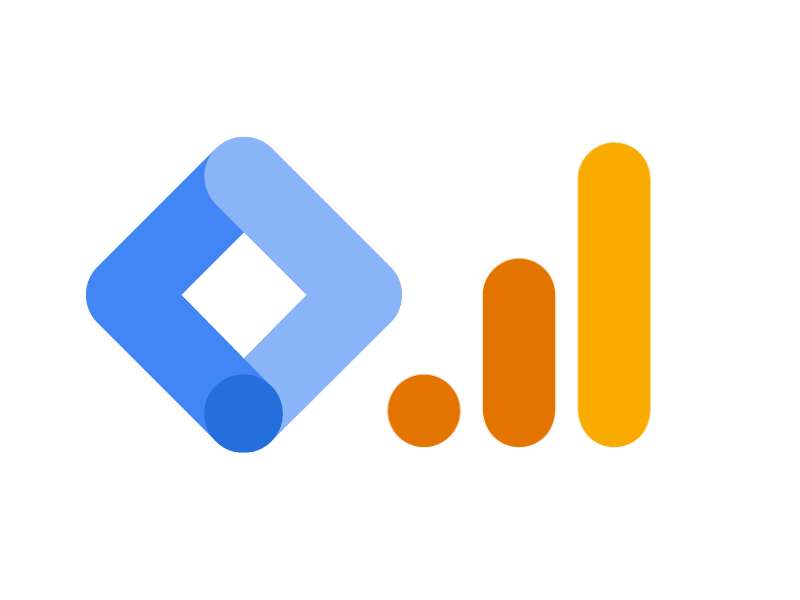Conversion tracking is an analytics tool that measures the efficacy of digital advertising. It records user actions post-ad engagement, such as purchases or sign-ups.
Conversion tracking is an essential aspect of digital marketing that helps businesses understand how their online ads lead to customer actions. By implementing tracking codes, marketers can identify which campaigns, keywords, or channels are driving the most conversions. This data becomes crucial for optimizing marketing strategies and improving return on investment (ROI).
Tracking conversions enables advertisers to refine their targeting, allocate budgets more effectively, and gain insights into customer behavior. With this approach, businesses can tailor their marketing efforts to better meet the needs of their audience, ensuring that every click has the potential to add value to the bottom line.

Credit: www.instagram.com
Unlocking The Power Of Conversion Tracking
Conversion tracking transforms the way businesses understand customer interactions. By shedding light on user actions, it reveals the effectiveness of marketing efforts. Let’s explore this indispensable tool and how it can skyrocket the success of your campaigns.
What Is Conversion Tracking?
Simply put, conversion tracking is a method to track user’s actions on a website. These actions, or ‘conversions’, could be purchases, sign-ups, or downloads, vital for understanding the success of online advertising.
The Relationship Between Conversion Tracking And Roi
Return on Investment (ROI) measures the gain from an investment relative to its cost. With conversion tracking, you can pinpoint which ads bring profits, and adjust spend accordingly for a stronger ROI.
Key Benefits Of Monitoring Conversions
- Optimize Campaigns: Adjust strategies in real-time for better performance
- Target Audiences Effectively: Understand your audience and tailor messages
- Allocate Budget Wisely: Pour funds into what works, cut what doesn’t
- Improve User Experience: Identify pain points in the conversion process
- Track Multiple Goals: Monitor various conversion actions for holistic insights
Setting The Stage For Effective Tracking
Welcome to the first step in mastering conversion tracking: Setting the Stage for Effective Tracking. Before delving into the technicalities, it’s crucial to lay a strong foundation. This entails crystal-clear goals, the right tools, and a grasp of tracking technologies. Let’s get started on this transformative journey.
Identifying Conversion Goals
Achieving clarity on conversion goals is the launch pad for tracking success. Each business has unique objectives. Some may aim for newsletter signups, while others seek product purchases. Outline these critical actions to understand what to track.
- Sales transactions
- Email subscriptions
- Downloaded content
- User registrations
- Contact form submissions
Selecting The Right Tools And Platforms
Opt for tools that offer in-depth insights and ease of use. Google Analytics is a go-to for web-based tracking. Yet, businesses may need other platforms for better data overlap. Consider your goals and technical capacity when choosing.
| Tool | Strength |
|---|---|
| Google Analytics | Comprehensive data |
| Facebook Pixel | Ad campaign performance |
| Hotjar | User behavior visualization |
The Role Of Cookies And Pixel Tracking
Cookies and pixels are the invisible forces behind the scenes. They gather data to inform your marketing efforts. Cookies store user preferences, while pixels track interactions with your content. Collectively, they feed data into your chosen platforms for analysis.
Consider the following:
- Cookie lifespan
- Pixel installation accuracy
- Data privacy regulations
Implementing Conversion Tracking
Implementing Conversion Tracking is crucial for understanding the success of your online advertising efforts. It allows you to see what happens after customers interact with your ads. Whether they purchase a product, sign up for a newsletter, or fill out a contact form, tracking these actions provides valuable insights. With a focus on the essentials, let’s delve into setting up conversion tracking effectively.
Step-by-step Guide To Setup
- Identify Conversions: Decide what customer actions you want to track.
- Create a Tracking Code: Use your analytics tool to generate a unique tracking snippet.
- Add Code to Website: Paste the snippet onto the relevant pages, typically the ‘thank you’ or confirmation page.
- Verify Setup: Test to ensure the code is firing correctly when conversions occur.
Integration With Advertising Campaigns
Seamlessly integrate conversion tracking into your advertising campaigns to measure effectiveness.
- Link Analytics: Connect your tracking system to your advertising platform.
- Set Goals: Establish clear goals within your campaign settings.
- Measure ROI: Track conversions to determine the return on investment for each ad.
Troubleshooting Common Tracking Issues
| Issue | Possible Solution |
|---|---|
| Conversions not tracking | Check if the tracking code is correctly installed on the page. |
| Data discrepancies | Ensure no filters are skewing your tracking data. |
| High bounce rate | Analyze user experience and optimize for better engagement. |
Analyzing Conversion Data
The heart of any successful online marketing campaign lies in understanding your conversion data. This isn’t just about counting how many people clicked a button or filled out a form. It’s about digging deep into the numbers to see not just what happened, but why it happened. By analyzing conversion data, you can uncover the story behind the statistics, helping you make smarter business decisions and increase effectiveness.
Interpreting Conversion Metrics
To truly gauge your campaign’s performance, interpret key conversion metrics. These metrics show user behavior and campaign effectiveness.
- Conversion Rate – Percentage of visitors who take the desired action.
- Cost Per Conversion – Average cost spent for each conversion.
- Conversion Value – The financial value of each conversion.
Cross-analyze these metrics against different demographics and channels to spot trends and areas for improvement.
Making Data-driven Decisions
Use the conversion data to make choices that can significantly boost your results. Look at the paths users take before converting and optimize the journey. If a particular page has a high drop-off rate, investigate and rectify why users leave.
Conversion data also lets you redistribute your budget to top-performing channels and pull back on those that aren’t delivering.
A/b Testing For Optimization
Never stop testing and improving your strategies. A/B testing, or split testing, involves comparing two versions of a webpage or ad to see which one performs better. This continuous process ensures you’re always moving forward.
- Define the elements you want to test, like headlines or call-to-action buttons.
- Split your audience and serve each group a different variation.
- Analyze the results to determine which variation had the highest conversion rate.
- Implement the successful changes and test again with new elements.
Use a structured approach to A/B testing to methodically enhance user experience and increase conversion rates over time.
Beyond The Basics: Advanced Tactics
Peering into the realm of advanced tactics in conversion tracking, one discovers techniques that lift performance and insights to new heights. Businesses leverage such strategies to refine their marketing efforts and maximize returns. Here, we dive into sophisticated methods that take analytics beyond mere numbers to actionable intelligence.
Enhancing Tracking With Artificial Intelligence
Artificial Intelligence (AI) redefines conversion tracking by offering precision and adaptability.
- Automated Insights: AI tools analyze data to identify patterns and trends, presenting opportunities for refinement.
- Personalization: AI enables the creation of personalized experiences, increasing the likelihood of conversions by tailoring content to user preferences.
- Predictive Analysis: By forecasting future user behavior, businesses can adjust strategies proactively for better outcomes.
Cross-device And Cross-platform Strategies
User journeys span multiple devices and platforms, making cross-device and cross-platform tracking crucial for a complete picture.
- Unified Tracking: Implementing unified IDs helps in recognizing users across different touchpoints.
- Seamless Experience: Ensuring consistent messaging and experience across platforms retains engagement and guides to conversion.
- Data Synthesis: Aggregating data from various sources provides a comprehensive view of user interactions.
Privacy Considerations In Conversion Tracking
With increasing emphasis on user privacy, respecting and complying with regulations is now pivotal in tracking conversions.
| Consideration | Action |
|---|---|
| Consent Mechanisms | Implement clear opt-in features for data collection. |
| Data Anonymization | Use techniques that remove personal identifiers from data. |
| Transparency | Clearly communicate data use policies to users. |

Credit: www.linkedin.com
Maximizing Roi With Continuous Improvement
In the journey to boost profits, tracking conversions is key. Picture conversion tracking as a toolbox. This toolbox helps businesses understand which tools work best. It’s not only about counting conversions. It’s about making each conversion work harder. Smart brands don’t just track; they optimize. Focusing on constant enhancement ensures investments pay off. Ultimately, businesses can earn more from their spending. Let’s dive into refining goals, tweaking methods, and learning from the best.
Refining Goals And Tracking Methods
Refined goals lead to clearer outcomes. Begin by asking what success looks like. It can be sales, sign-ups, or downloads. Once clear, align tracking methods to these goals. Fit the puzzle pieces together. Match objectives with the right metrics. Is it click-through rates, conversion rates, or return on ad spend?
- Identify key performance indicators (KPIs) that matter.
- Set measurable and time-bound goals.
- Choose tracking tools that can capture these metrics accurately.
Leveraging Insights For Strategic Adjustments
Leveraging insights pushes businesses forward. Use data to make informed decisions. Data shines a light on what’s working and what’s not. Transform this knowledge into action. Switch tactics, tweak campaigns, or re-allocate budgets. Do this with precision to drive ROI growth.
- Analyze data regularly to spot trends.
- Test different strategies to see what amplifies results.
- Optimize campaigns consistently for better performance.
Case Studies: Success Stories And Lessons Learned
Learn from the success tales and the slip-ups of others. Case studies pack powerful lessons. Unpack these stories to replicate wins and avoid mistakes. Seeing actual results inspires innovation. It gives a map to navigate similar situations. Look at these examples to carve a path toward higher ROI.
| Company | Challenge | Solution | Result |
|---|---|---|---|
| Brand X | Low conversion rates | Redesigned website checkout process | 30% increase in sales |
| Brand Y | High cost per acquisition | Targeted ad campaigns | 20% decrease in costs |

Credit: www.facebook.com
Frequently Asked Questions Of Conversion Tracking
What Is Conversion Tracking?
Conversion tracking is a tool that measures the actions visitors take on a website after clicking on an ad, such as purchases or sign-ups. It helps determine the effectiveness of advertising campaigns and guides optimization efforts.
How Do You Keep Track Of Conversions?
Track conversions by setting up goals in Google Analytics or using tracking pixels from platforms like Facebook Ads. Monitor these through customized reports and dashboards for ongoing analysis and optimization of your marketing strategies.
What Is The Goal Of Conversion Tracking?
The goal of conversion tracking is to measure and analyze the performance of marketing efforts leading to desired customer actions, such as purchases or sign-ups.
What Is Conversion Rate Tracking?
Conversion rate tracking measures the percentage of users who complete desired actions on a website, enabling businesses to assess and optimize their online performance.
What Is Conversion Tracking?
Conversion tracking is a process that monitors and measures user actions, such as purchases or sign-ups, after they click on an advertisement.
Conclusion
To sum up, conversion tracking is pivotal for optimizing your digital campaigns. By understanding which elements drive results, you focus on what truly matters. Remember, analyzing your data guides smarter marketing decisions. Start tracking now and watch your conversions climb.
Let’s make every click count.



